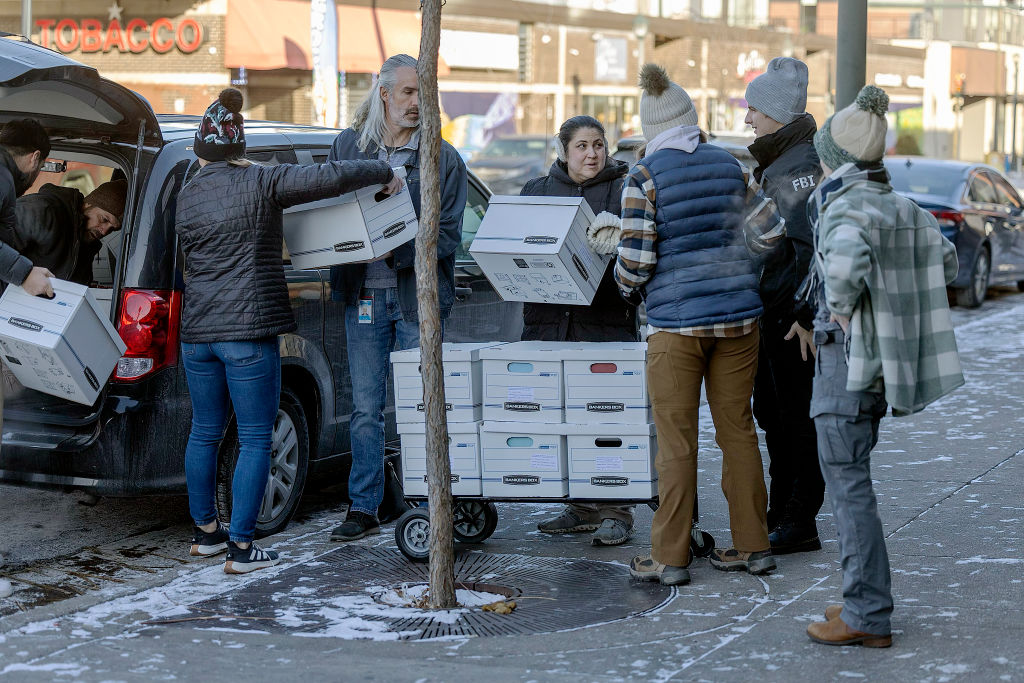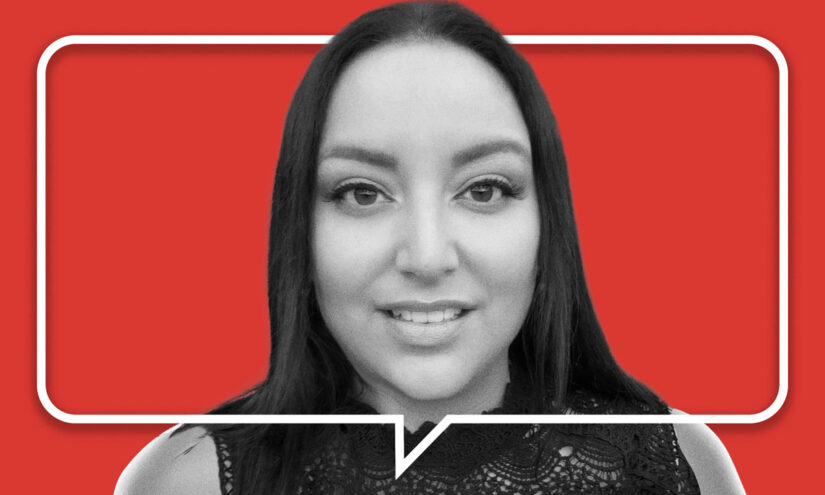Get stories like this delivered straight to your inbox. Sign up for The 74 Newsletter
A decade ago, in an effort to quickly expand early intervention for autistic children, officials in Minnesota — long a leader in providing disability support — created a program intended, among other things, to smooth reimbursement for families. In part, the goal was to encourage the proliferation of health care providers, therapists and other people equipped to work with autistic children during critical stages of development.
It worked. Reimbursements rose from $1.7 million in state funds to 41 providers in 2017 to nearly $400 million to 328 providers in state and Medicaid funds through the Early Intensive Developmental and Behavioral Intervention benefit in 2023.
Most of those new centers engaged in applied behavior analysis. ABA is an intensive behavior modification technique that aims to make autistic children act more like their typically developing peers by “extinguishing” certain traits through compliance with specific repeated commands. (A 74 investigation last year demonstrated that there is no reliable data to show the treatment works, and that it may actually cause harm to patients.)
Last year, the FBI began investigating whether some of those treatment centers have defrauded Medicaid, billing for services never provided. Though investigators have not said how many for-profit centers they are looking into or who their clients are, many are believed to enroll the children of East African immigrants, who are particularly vulnerable because of the lack of culturally appropriate services. There are also indications the alleged fraudsters may have ties to defendants in the country’s largest pandemic relief aid scandal, in which nonexistent food distribution sites supposedly created to provide children with meals during COVID-related school closures billed the state for hundreds of millions of dollars.
As the 2025 legislative session gets underway, state lawmakers are holding hearings on proposals to tighten oversight. Most of the testimony has centered on creating standards to require services to be provided by licensed professionals in safe settings. But some autism advocates have expressed concern that those standards will entrench ABA as the dominant approach — one that, among other things, is replacing other special education services in schools — instead of supporting alternatives that they say are more effective and humane.
One of those who testified is Native American author and activist Jules Edwards, the autistic parent of three autistic youth, ages 11, 19 and 21, and a member of the Anishinaabe Eagle Clan. After introducing herself in Ojibwe, she told a state Senate committee that ABA is not a therapy, but “a specific methodology that was created by the same people that created gay conversion therapy.”
Right now, providers are not required to be licensed; are allowed to describe employees who may have only a high school diploma as therapists; and are not held to the same safety standards as even home day care centers, Edwards testified. “Despite the ABA industry lobbying for more power over the autism community, they need their power restricted until they can prove with empirical and independent evidence that they are doing what they claim they are doing” in terms of providing effective, safe services.
Edwards recently expanded on her testimony in an interview with The 74. This conversation has been edited for length and clarity.
What motivated you to testify?
When my children were diagnosed with autism, I threw myself into research. I learned about autism and I learned about interventions. I learned from professionals, parents and autistic adults that autism is a social, communication and sensory disability, and not a behavioral disorder. I learned that applied behavior analysis is a behavior modification program that requires autistic children to suppress their natural way of being in order to please the adults around them.
That didn’t make sense to me. Why wouldn’t we want to address any underlying needs first? Typically, autistic kids specifically need to learn the why, because we’re bottom-up learners. We like to gather information about things before taking action. But ABA requires a top-down, authoritative approach, where autistic children are not allowed to ask why. They are required to comply with authority, and that poses a lifelong danger to that child.
Testifying was an opportunity to highlight the fraud, waste and abuse that happens within the ABA industry. American taxpayers pay billions of dollars per year to enrich private equity investors under the guise of an autism therapy that works. However, ABA isn’t a therapy, and it hasn’t been proven to improve quality of life.
The Department of Defense’s 2020 Comprehensive Autism Care Demonstration Annual Report reported that 76% of children in ABA showed no improvement after one year, 16% had improved, but 9% were worse after a year of treatment. That really brings into question the cost-effectiveness of ABA. When we’re talking about fraud and waste of Medicaid dollars or taxpayer dollars generally, we need to be honest about the actual outcomes.
But there’s little oversight. The state doesn’t require health and safety procedures, behavior guidance, standards, first aid, CPR. They aren’t required to have a mental health response, crisis response or suicide intervention plan. They don’t have to provide culturally responsive treatment practices.
A 5-year-old child was just killed in an explosion in a hyperbaric chamber in an unaccredited ABA center in Troy, Michigan. The chamber exploded with the child inside, and he passed away. We know that hyperbaric chambers aren’t actually a treatment or cure for autism or anything like that. It’s not approved by the FDA. If there was oversight, if there was licensing, if there were safety requirements that prevented this kind of alternative treatment it could have saved that boy’s life.
The state’s online description suggests “modern” ABA has largely stopped using punishments to discourage certain behaviors. But I have heard parents and autistic adults who have experienced ABA say it is still coercive. Can you give us an example?
Planned ignoring, which is a technique used in ABA, basically denies the humanity of the child who is subjected to it. When we’re children, whether you’re autistic or not, and you’re hanging out with another kid, and the other kid is pretending you don’t even exist, it’s dehumanizing. But now, within ABA, the adults do that to the children.
Say a child is throwing a toy that they shouldn’t be throwing. They may not be hurting anybody. They might be throwing it because they like the sound. It could be stimming [the term for a repetitive sound or motion an autistic person may use for emotional regulation or to express joy]. It could be anything. The adult doesn’t want the child to play with the toy that way.
They might try other interventions before planned ignoring, but then the child is being ignored completely, whether the child is trying to gain the attention of the behavior tech or not. This can cause increased “behaviors” of the child escalating, trying to gain that attention. But no matter how much the child tries, the adult is not going to give in.
We can see how frustrating that must be, particularly if that’s a child who may be struggling with communication and may not say, ‘Hey, I really want to play ball right now.’ That kid is maybe unable to ask for what they want, or the way that they’re asking is a behavior that the behavior tech doesn’t like.
Is there a danger that as the state creates standards and licensing procedures to protect children, it will further codify this industry as the dominant treatment?
Absolutely. ABA is currently the dominant treatment. They have lobbyists. They absolutely can persuade legislators to further empower the industry. Because they have the most money, they have the most power right now.
A lot of the research about ABA, claiming it’s the gold standard treatment, etc., is funded by and conducted by the people who profit from it. We need to be sure that decision makers are looking at facts and data and information that isn’t that doesn’t involve a conflict of interest. It’s really important that we refer to outside, independent researchers, like the Department of Defense study.
There was a push at one point for board-certified behavior therapists [credentialed ABA supervisors] in Minnesota to be able to diagnose autism. They would then be able to enroll those children in their services. That is dangerous, because children who need a diagnosis need to go to an actual medical professional and have other conditions ruled out. They need to be evaluated for potential co-occurring conditions, etc. If a behavior therapist is able to diagnose autism, but they can’t diagnose anything else, then all of that child’s underlying conditions or additional conditions may be overlooked.
If my children didn’t have full-team neuropsych evaluations, I wouldn’t know about their learning disabilities, and I wouldn’t know how to provide support. I wouldn’t know how to advocate for my children in school. My child used to be punished for his writing disability until we learned, through that neuropsych evaluation, there’s a dysgraphia issue. So let’s provide writing prompts. Let’s provide support for writing. Let’s provide adaptations and assistive technology. If he only had an autism diagnosis, that would have been met with behaviorism, he would have been rewarded for doing well, punished for struggling, and he wouldn’t have had access to the tools that he needs.
There are definitely other treatments that don’t have that same level of influence but may be more effective, may be more humanizing. A lot of those are not as widely available.
Many kids spend half or or all of their day in an ABA center rather than in a school where their learning would be attended to.
It’s a problem that begins in preschool. Children are often pushed out of public schools when a school or preschool doesn’t have the knowledge or resources to care for the child. They say, “Maybe this isn’t the best fit for you.” That’s something that my family has heard from our local public school. That’s not really a thing that a special education director should be saying to any family, and we should be concerned about the people who are most marginalized in our communities. When those kids are excluded from public schools, parents are often left with very few options.

ABA centers market themselves as being able to help children to gain skills and become more independent. But if that were so, why isn’t inclusion in public schools the ultimate goal of ABA centers? ABA centers are not schools. They’re not accredited to provide education. There are very few ABA centers that have transition paths or goals for kids to move out of ABA and into mainstream schools. Instead, many children remain in ABA, sometimes throughout high school, deprived of the opportunity to learn what their peers are learning. It’s a form of educational neglect.
Children in ABA often aren’t allowed to learn the most basic things. For example, [behavior therapists] often dissuade spelling to communicate, which means that they’re not encouraging autistic kids in ABA to even learn the alphabet. They aren’t taught literacy, they aren’t taught math, they aren’t taught history. That’s sad and scary, because then when these children grow up, all they’ve learned how to do is comply with authority.
There was a hearing a couple of days after yours where a number of East African parents testified about the conditions that compelled them to take advantage of ABA. There’s an element of desperation, in terms of a lack of alternatives, that must be clouding the picture.
It’s a sad reality that there’s a history here in Minnesota of people preying on immigrant communities. For example, in 2017 there were 75 cases of measles identified in the Somali population in Hennepin County alone, a result of anti-vaxxers who saw an opportunity to push their narrative that vaccines cause autism. They targeted immigrant communities with fearmongering tactics.
The ABA industry pushes itself onto parents by claiming to be the only hope for their children. I’m very concerned that marketing targets immigrant communities without sharing balanced information that will help parents make informed decisions for their families. I’m worried about the conditions in which ABA is the only option.
A lot of the time, parents are in a desperate situation where it’s like, “I have to go to work to pay the bills, and I have to have a place for my child to be that is safe and supervised.” And instead of lobbying for inclusion, for appropriate support and services in schools, we’re saying, “Well, this kid can go to ABA instead.”
That’s not good for anyone, because inclusion benefits all of us. Inclusion benefits abled and typically developing people just as much as it benefits disabled people. I think we can see that right now in our current political climate, where it’s been so normalized to “other” people. That causes harm to all of us.
ABA is problematic in your culture.
I’m Anishinabe. ABA could never meet my needs as a Native person. “Culturally responsive” essentially means to adapt services to meet the needs and values of a person’s culture. Some cultures, particularly settler-colonial culture, values assimilation. Settler-colonial culture prefers when people blend in and are agreeable to authority. ABA is rooted in that.
Behaviorism seeks to control a person’s behavior with the carrots-and-sticks analogy. We reward the things we want to see, we punish the things that we don’t want to see. We all do get rewarded for doing certain actions, and we all could potentially be punished by other actions.
But it’s not the same micro-management of behavior — you can only communicate the way I want you to communicate. You can only experience your senses the way I want you to experience your senses. You can only socialize the way that I have determined is a valid way of being.
There’s the stereotype that autistic people don’t make eye contact, but that eye contact is a cultural phenomenon. Not every culture thinks eye contact is this great thing. Some cultures find it disrespectful, but ABA doesn’t always take that into account. It’s determined by the [therapists], not necessarily the child and their family and their culture.
We should all have some self-determination with how we use our bodies. If I’m not hurting anyone else, I should be able to stim. If I communicate best by writing, that should be encouraged, and I should be provided support and tools to do that. Rather than what happens often in ABA, where parents are told, “This will help your child speak,” but it’s not speech therapy.
One of my children didn’t speak until he was a little bit older. Starting when he was about 2, he would use one or two words here and there, but he wouldn’t combine them. It was tough, because at the time, we didn’t have a diagnosis, we didn’t have any sort of speech language therapy. As a parent, I relied on very basic sign language. And I was thrilled because I could communicate with my kid whether he was using mouth words or not. Do I wish that we had speech language pathology at the time? Yes, absolutely, that would have been great. But we didn’t. I think that if we had pushed that particular child into using mouth words, I think it would have built resentment.
Now he can speak, but his preferred language now is music, which is really cool because he’s a musician. Music is a really strong cultural practice that’s traditional for Anishinaabe people or Ojibwe people. It’s healing for us, something that we love. Why don’t we encourage that, rather than the ABA ideal of mouth words?
Get stories like these delivered straight to your inbox. Sign up for The 74 Newsletter







